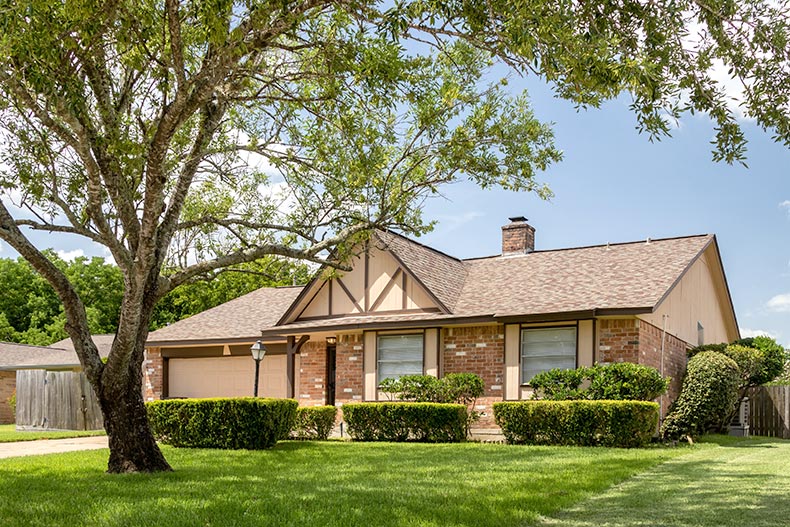When it comes to homebuying in a retirement community, the process doesn’t need to be difficult. Being able to purchase a home in a retirement community that has all the amenities you need is as easy as the process below.
1. Complete Your Loan Pre-Approval

Firstly, you’ll need to be pre-approved for a home loan. This is a standard part of any homebuying process. To obtain a home loan pre-approval, you’ll need to provide certain documents and information to a lender or a mortgage broker. Also, the pre-approval process helps you determine how much you can borrow and demonstrates to sellers that you’re a serious and qualified buyer.
What You Need For a Home Loan Preapproval
Personal Information
- Your full name
- Social Security number
- Date of birth
- Contact information (address, phone number, email)
Employment and Income Details
- Employment history (employer names, addresses, and dates)
- Pay stubs or W-2 forms to verify your income
- Tax returns (usually for the past two years)
- Other sources of income (e.g., rental income, investments)
Financial Information
- Bank statements (usually for the past few months) to show your savings and checking account balances
- Investment account statements (e.g., stocks, bonds, retirement accounts)
- Details of any outstanding debts (credit cards, loans, other mortgages)
Assets
- Information on any assets you plan to use for a down payment, such as savings, gifts, or inheritance
Credit Information
- Your credit score and credit report (the lender will typically obtain this on your behalf)
- Explanation of any negative items on your credit report, if applicable
Property Information
- The address and details of the property you intend to purchase (if you have one in mind)
Connect With An Experienced Real Estate Agent
When applying for pre-approval, having all the necessary documents ready can speed up the process. Keep in mind that pre-approval doesn’t guarantee final loan approval, as the lender will still need to verify the information and the property you intend to purchase. However, it’s a crucial step in the homebuying process, as it gives you a good estimate of how much you can borrow and shows sellers that you’re a serious and financially qualified buyer.
Once you have your budget, connect with a real estate agent. Let them know you’re looking for a home in a 55+ community. Luckily, 55places can help with this step. Our partner agents specialize in 55+ homes and have a lot of experience helping retirees find their dream homes anywhere in the country.
2. Determine the Type of Home You Want

Homes in a 55+ community can vary, from single-family homes, condos, and townhomes to villas, apartments, or even bungalows for areas on the coast. Home sizes tend to be smaller, but retirees looking to upsize can also find their right fit.
The design of 55+ communities reduces maintenance demands while allowing you to have your own space and privacy. Some communities put more effort and focus into the community amenities while others focus more on larger properties. Your personal preferences and goals will help you decide between these property types.
3. Shop Around for Options

If you like the idea of a 55+ community, then you need to tour some of the most desirable ones in your area. Make sure you take advantage of touring some of the top-tier communities and others that may be newer or not as large.
Amenities
All 55+ communities will have amenities. These are often the way they attract and draw residents in. These amenities often include recreational spaces such as:
- pools
- pickleball/tennis courts
- fitness centers
- restaurants within the community
- clubhouses
- gardens with walkways and paths
- golf courses
- concierge service
Keep in mind: Monthly homeowners association (HOA) fees cover the upkeep of these amenities. So, the more amenities you have on-site, the more you’ll have to pay each month to keep and maintain this access. In most cases, you’re responsible for your share of the expenses, even if you don’t participate or utilize one of the amenities.
Maintenance
Another area to look at when you’re touring 55+ communities is the maintenance of the property. If you start to see several less-than-pleasant areas, you can get an idea of what the maintenance is like in the area. Also, look deeper into areas like the pool and clubhouse, ensuring any damage or repairs are clean and done properly. If you’re going to pay for these amenities, it’s important they’re maintained.
One last piece of information to gather when touring these communities is the lawn care for each private home and lawn. Check if there’s regular lawn maintenance. Or are some lawns maintained while others are not? Maintenance may be a part of the HOA and a requirement to live in the community.
4. Apply for the Community

Once you have chosen one or maybe two retirement communities, it’s time to put in your application.
When you apply to a retirement home community, you’ll have to provide background information so that the managing parties can determine if you are eligible to purchase a home in the community. The information they’re looking for includes:
- ages of residents who will be moving to the community
- types of care or services needed daily
- outline any entrepreneurship interests you may have
- home inheritance
This information might be personal, but it’s meant to determine if you’re a good fit for the community. Because some communities offer health care access, you may have to examine more medical details at different stages.
Additionally, note that some communities have specific rules regarding what happens if you or your spouse should pass away. If a family member under 55 will inherit your home, double-check the contract to be sure everything is in order.
Multiple Applications
If you’re interested in multiple communities, feel free to complete multiple applications. Remember that you’re not only attempting to sell yourself to the community, but the community needs to sell itself to you. It’s an important part of your homebuying process.
5. Close on Your Home

Congratulations! You’re approved by your desired community. Contact your real estate agent and start finalizing your purchase. When closing on your home, you may be presented with a contract requiring you to agree to terms while living there. Look over this contract carefully. Consequences of violations may be grounds for removing you from the community or having to pay a large fine.
Get Additional Homebuying Resources Today
The homebuying process in a 55+ community is not as elusive as some think. If you would like additional resources or have further questions, contact us at 55places.com today!







